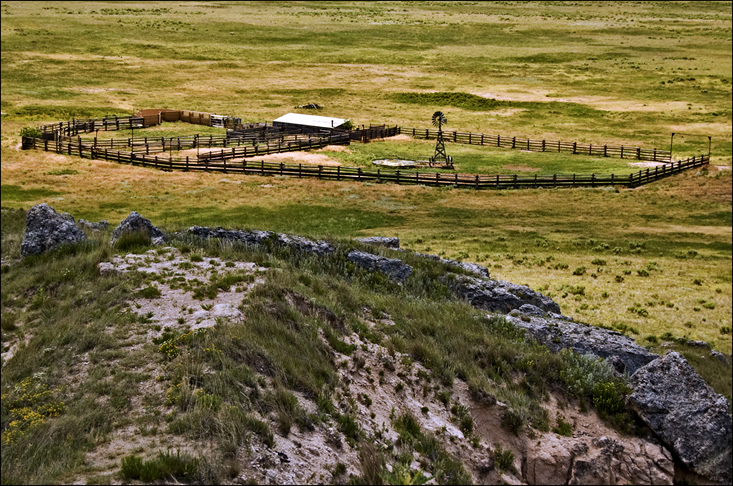|
|
|
|

 Great Plains Yucca Flower
Soapweed The image, its beauty and its form, lasts when the flower is gone, but who among the millions will pause along the path to see it, either the bloom on the earth or the photograph on the page? The moment of conception is fast like a lifetime, and the spark that creates a thing is transient like the electric cord binding the image to this shimmering page. It is said the Great Plains yucca can live for half of a century. Who can know . . . at the end . . . when a yucca . . . as a singular creation . . . has fallen among the countless wild things of the field?
Family: Agavaceae Soapweed is the "also called" name for Mr. Nuttall's Yucca glauca. It is the tiny Yucca cousin to the towering Joshua tree, Yucca brevifolia, grandest of the forty members of the genus. The roots of the soapweed, clinging to the rocky and sandy soil of the Great Plains, find their water and nutrients by stretching out as far as thirty feet from the little tower of leaves, stems, and flowers rising from the earth. The long and shallow roots provide succulent treats for foraging bison, who uproot the yucca with their sharp hooves and enjoy it for dinner. As for the soap in the weed, it also comes from the roots. Soak them in warm water and they exude a mild and pleasant lather, which can be used as soap and shampoo. It is said that the First Peoples of the land found soapweed and other varieties of yucca useful as stock for medicinal teas to treat stomach aches and ailments of the scalp. Leaf fibers became raw material for baskets, mats, and sandals. Young yucca stalks and new seed pods were cooked and eaten. Big Basin Prairie Preserve in the Red Hills of south-central Kansas is home to a host of wonderful wildflowers and a small herd of bison, who can be seen munching on the soapweed roots and other brightly colored delicacies growing abundantly on the prairie. The preserve is one of nature's remote little jewels, a circular depression about a mile in diameter and enclosed by vertical walls rising to heights of a hundred feet. Among its many surprises is Saint Jacob's Well, a pool nearly a hundred feet in diameter that is nestled in a little depression of its own and is said to have never gone dry.  Big Basin Prairie Preserve, Kansas • June 4, 2009 A primitive stone and gravel road meanders through Big Basin. This vista, facing southwest, is about fifty yards or so off the road and some ways into the heart of the preserve. The sharp vertical drop-off on the other side of the blue-gray stones falls about a hundred feet to the basin floor. The bison pen is the only structure on the preserve. On the day of our visit, a small herd grazed in the basin just to the left of the view shown above. "The primary objective in managing the preserve is to maintain the site in its natural state and thus preserve a unique ecological and geological area," the Kansas Department of Wildlife & Parks states in its Big Basin flyer. "Grazing is a natural and healthy activity in the prairie ecosystem, and herds of bison are maintained at the preserve to continue this natural process." I also photographed the bison, but they were far away and now appear as tiny brown specks in the images. Some day I'll go back and take a closer picture. L I N K S
Notices announcing new entries for Crow's Cottage Glossary and Compendium are sent by e-mail express to my list of family, friends, students, and fellow travelers. If you've come here by some other means, I invite you to write me at the address below so I can add you to the list. It's a private list, shared with no one and guarded to the death by a flock of warrior crows. Or protected by magic fairies with their tricks of illusion. Aggressive or pacific — you choose — the guardians are in our service to ensure your privacy. Ebenezer Bowles Wednesday, April 28, 2010 |
|

|
|
|
